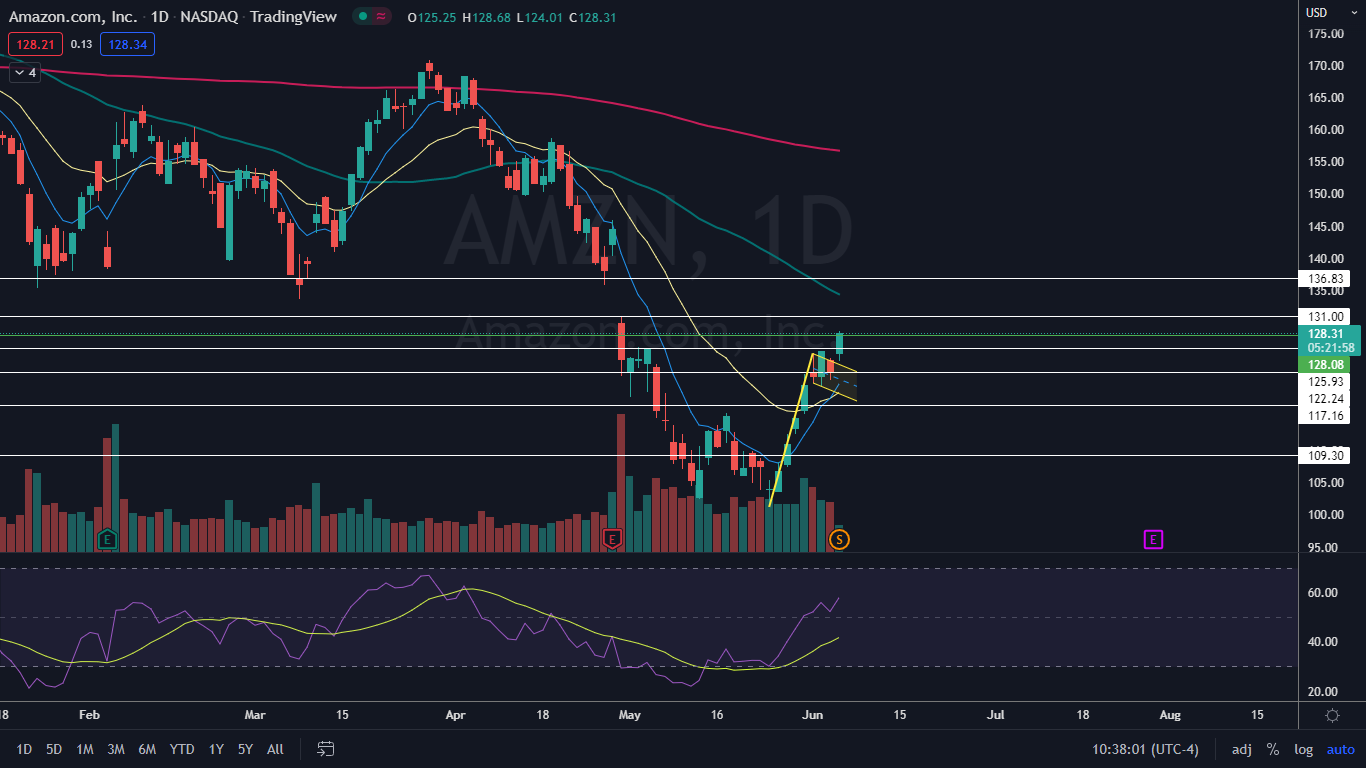Amazon.com, Inc appeared to be trading more than 94 percent lower in the premarket, but the new $125 price tag on the stock is due to a 20-1 stock split, which took effect on Monday after being announced in March.
The stock split prompted analysts to adjust their price targets on Amazon, with Morgan Stanley maintaining its Overweight rating and adjusting the price target to $175 and MKM Partners maintaining its Buy rating on the stock and adjusting the price target to $180.
Amazon’s adjusted share price makes investing in the stock more affordable for retail traders, and on Monday Amazon was shooting up almost 5 percent higher, which caused the stock to break up from a bull flag pattern on the daily chart.
- For bearish traders, the “trend is your friend” (until it’s not) and the stock may continue downwards within the following channel for a short period of time. Aggressive traders may decide to short the stock at the upper trendline and exit the trade at the lower trendline.
- Bullish traders will want to watch for a break up from the upper descending trendline of the flag formation, on high volume, for an entry. When a stock breaks up from a bull flag pattern, the measured move higher is equal to the length of the pole and should be added to the lowest price within the flag.
The Amazon Chart
Amazon’s bull flag pattern was created between May 24 and Friday, with the pole formed between May 24 and June 1 and the flag printed over the two trading days that followed. The measured move the break from the pattern is 23 percent, which indicates Amazon could soar up toward the $148 level in the future, although retracements to form higher lows are likely along the way.Amazon’s higher prices on Monday caused the stock to confirm it’s now trading in an uptrend, with the most recent higher high printed on June 2 at $125.51 and the most recent higher low formed at the $120.05 mark on that same day. Bullish traders looking to enter a position may choose to wait until Amazon forms its next higher low and prints a reversal candlestick above the $120 level in order to take a position.
Bearish traders want to see big bearish volume come in and drop Amazon down to form a lower low, which would negate the uptrend and indicate more downside is in the cards. Although the stock has confirmed an uptrend on the daily chart, Amazon is still trading in a downtrend on the weekly chart.
Amazon has resistance above at $131 and $136.83 and support below at $125.93 and $122.24.






